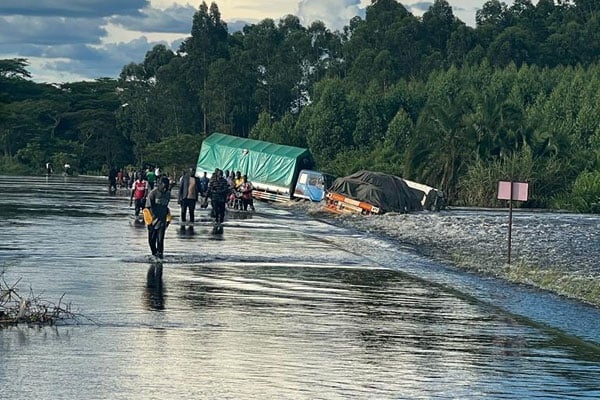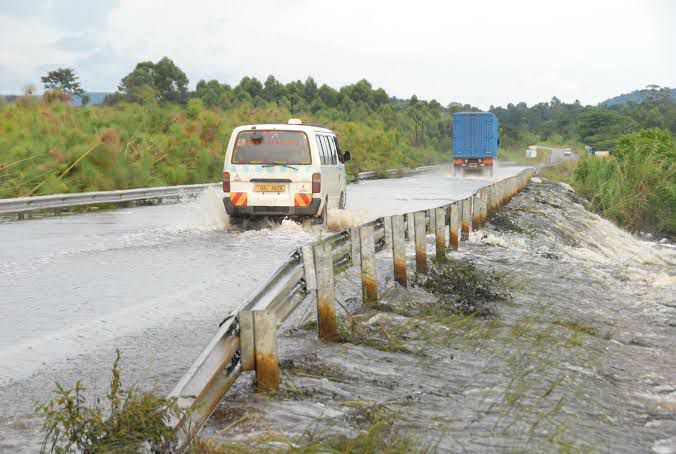Kampala, Uganda | NOW THEN DIGITAL — Two weeks ago, the deluge from River Kafu wreaked havoc, displacing 2,000 households across Hoima, Kyankwanzi, Masindi, Nakasongola, and Kiryandongo districts, leaving a trail of destruction in its wake.

The torrential floods, which surged beyond their banks, not only obliterated roads and bridges but also inundated vast swaths of crops, prompting concerns about an impending food shortage.
In the aftermath, the displaced sought refuge in churches, schools, and with unaffected relatives, attempting to rebuild shattered lives. Among the affected, James Kabarebe recounted the loss of his 12-acre maize garden, compelling him and others to find shelter in a local church building.
Bright Mugume, chairman of Kimengo Sub-county, estimates that 3,600 people in his area have been affected, with dozens seeking refuge at the sub-county headquarters. The toll includes women, children, elderly individuals, and school-going children left stranded amid the chaos.
Nakitoma Sub-county in Nakasongola District faced the closure of two primary schools—Kafu River Primary School and Kiloro Primary School—due to submerged facilities. Godfrey Lutalo, the LC3 Chairperson, reported that recent floods, unlike prior incidents, impacted six villages, leading to the closure of schools, churches, and over 26 houses. The extent of the floods now covers approximately 4 kilometers along the River Kafu banks.
District leaders in Nakasongola estimate that about 1,200 people have been displaced, with over 4,000 acres of maize gardens devastated in Nakitoma Sub-county. The chairman, Sam Kigula, expresses concern for the future, anticipating continued rains until December 2023.
The affected villages in Nakitoma Sub-county, including Kiloro, Kafu, Wangoyiro, Kyani, Nongo, Kayikanga, and Bugyabe, bear the brunt of the catastrophe.
The floods also led to the submersion of the River Kafu bridge on the Hoima-Kyankwazi-Kampala road, compelling the Uganda National Roads Authority (UNRA) to close it temporarily. Travelers were redirected to alternate routes, including the Hoima-Masindi-Kafu road and the Hoima-Mubende-Mityana road.
Despite UNRA’s announcement of major repairs to the damaged sections of the Hoima-Kyankwazi Bridge, some motorists defy guidelines, navigating the risky sections. UNRA spokesperson Allan Ssempebwa emphasizes the ongoing repairs, cautioning against jeopardizing safety by violating traffic guidelines.
Additional roads damaged by the floods include the Nyakarango-Miyeba Road, Kayera-Kikaito Road, Kimengo-Masindi Port Road, and Kafu-Karangwe Road in Masindi District.
The repercussions extend to Kiryandongo District, where floods devastated over 2,000 acres of maize gardens and rendered several access roads impassable. Wakisanyi Village and the Masindi Port Road areas bear the brunt of the destruction, with floodwaters threatening to submerge highways and exacerbate the crisis.
Authorities in the affected areas are on high alert, anticipating further road damage and expanded flood risks as the prolonged rainy season unfolds.













